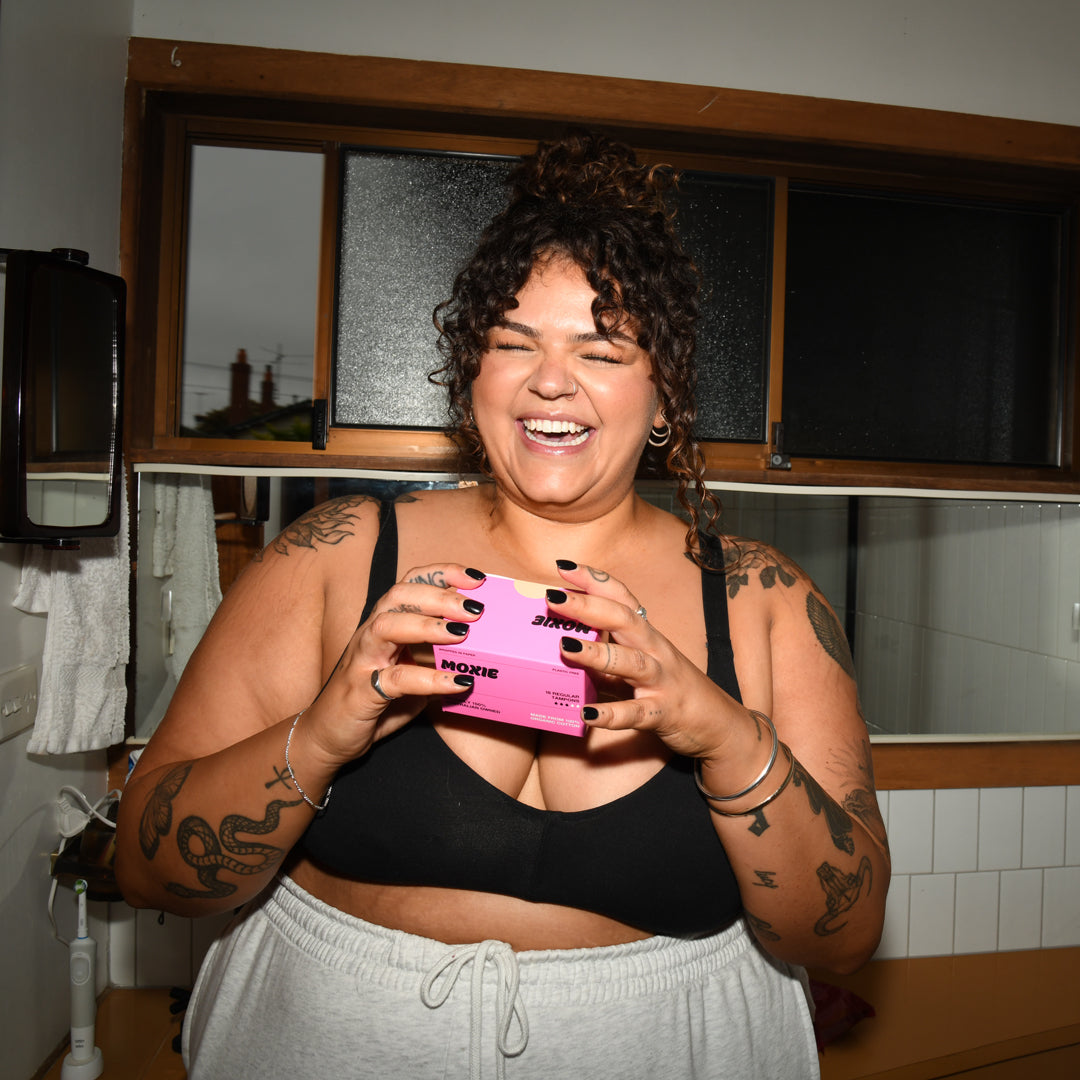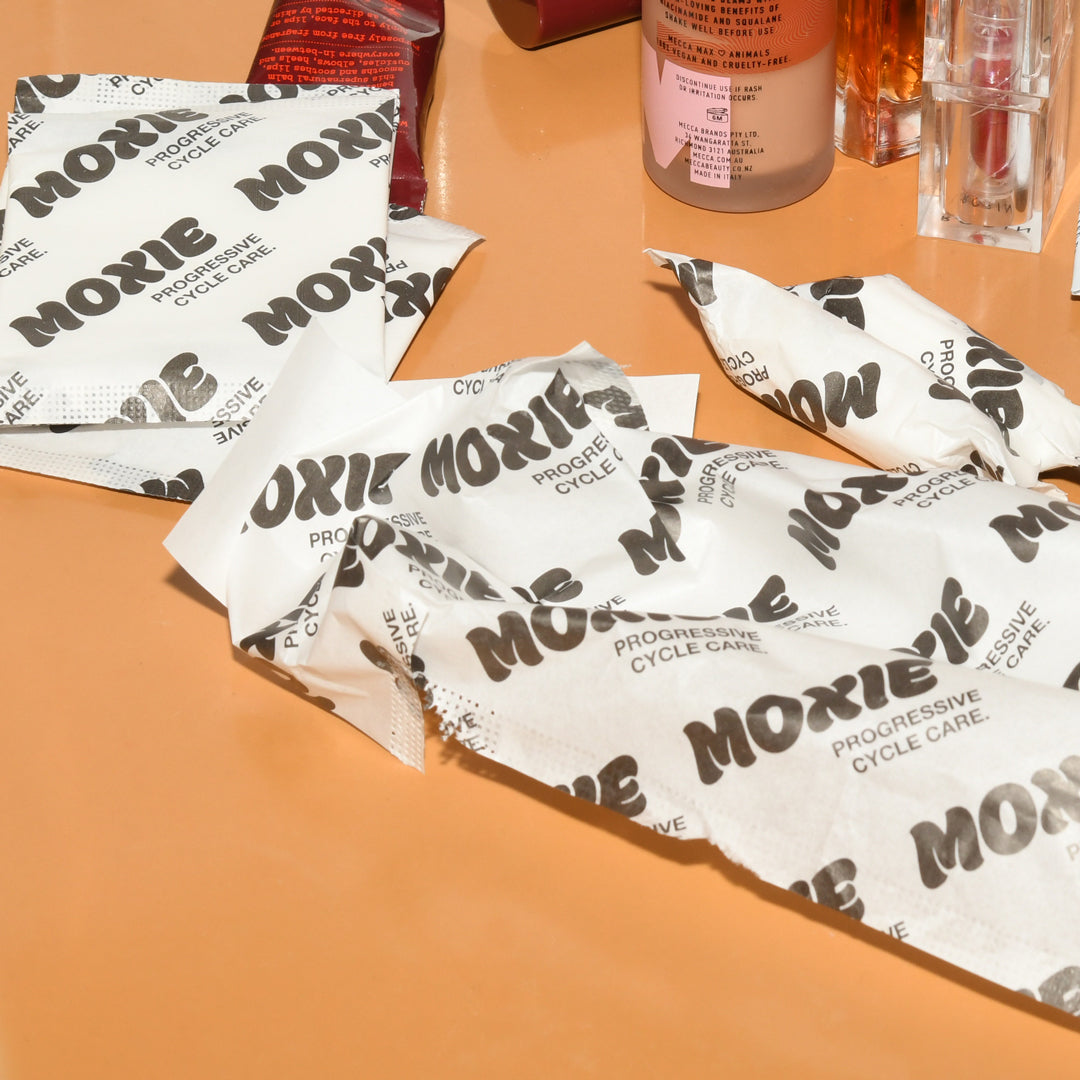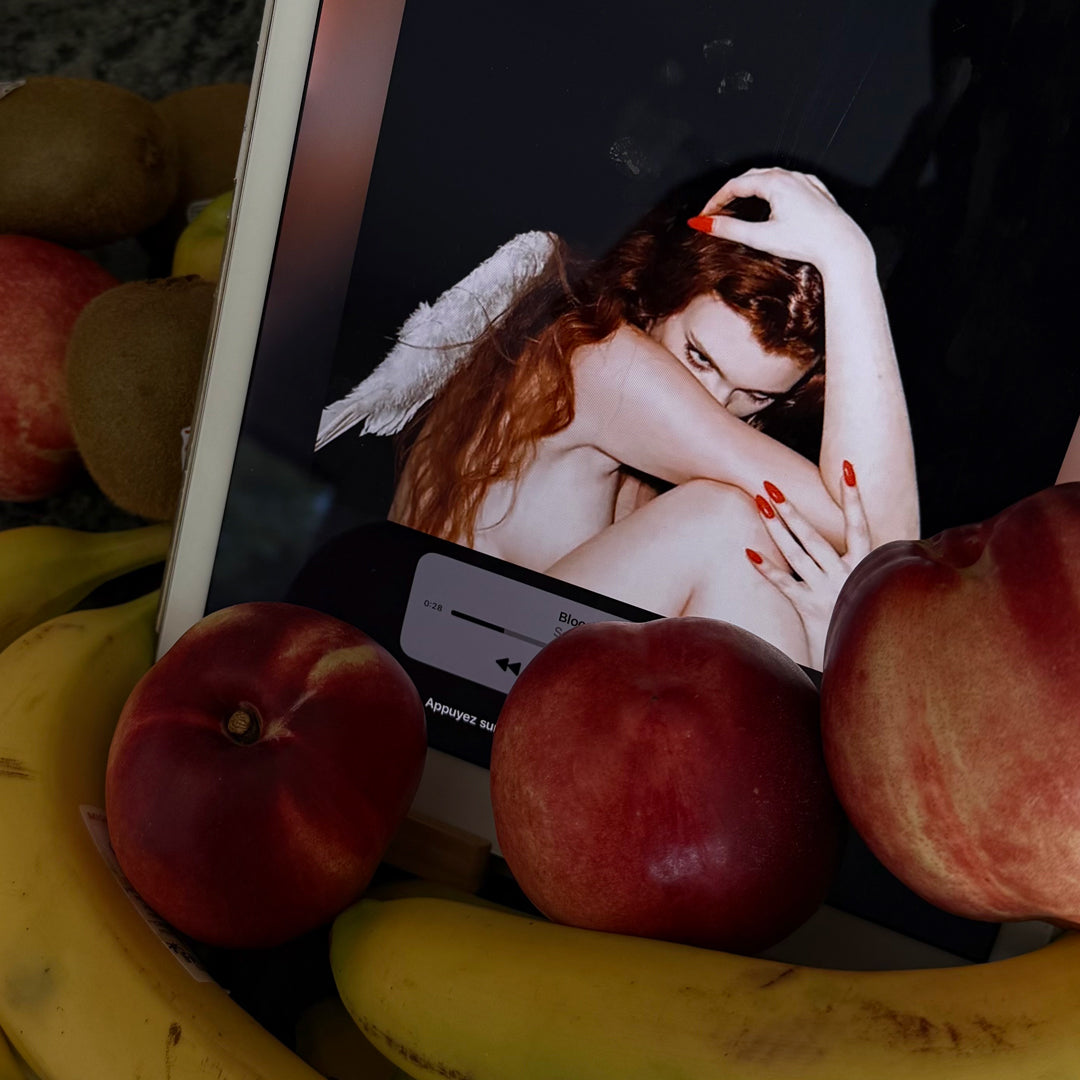The stages of the menstrual cycle, explained.

Image designed by Freepik
Your menstrual cycle is more than just a period. In this VIP (very important piece!) penned by the team at Moxie HQ and given the all-clear by regular Moxie blog contributor and expert consultant, Sydney-based Gynaeocologist Dr. Nicole Stamatopoulos, we break-down the four phases of the menstrual cycle, their functions, symptoms, and share some tips on how to best nurture yourself during each one.
First up...
Let's start by laying the foundations and explaining some of the basics before we get into the specifics. We'll define some key terms that are important to understand, if you're not already familiar with them (that you may want to refer back to as you make your way through this piece), as well as answer some of your most common FAQs around the menstrual cycle.
GLOSSARY OF TERMS
CORPUS LUTEUM: A cyst-like structure inside the ovary that holds the developing egg.
ENDOMETRIUM: Lining of the uterus.
FOLLICLES: Fluid filled sacs containing immature (initially, anyway) eggs. The number of follicles a menstruating person has can vary, depending on factors like age and medical history.
MENSTRUATION: A.k.a your period. More specifically, it’s when the endometrium (lining of the uterus) sheds and expels through the cervix and vagina.
OVARIES: Small, oval (hence the name!) shaped glands that sit either side of your uterus, responsible for producing and storing eggs. They also secrete the hormones estrogen and progesterone.
OVULATION: The release of an egg from the ovary.
PITUITARY GLAND: A gland that sits at the base of your brain, responsible for making hormones.
UTERUS: A.k.a. the 'womb'. It's a pear-shaped organ, present in most people born with female reproductive organs, whose function is to nourish the foetus (unborn baby) as it grows.
WHAT'S THE PURPOSE OF THE MENSTRUAL CYCLE?
Your menstrual cycle is more than just a period. Menstruation, or your period, is just the first phase!
Your menstrual cycle, through a series of complex and incredible interactions between your brain, ovaries, uterus and hormones, is your body’s way of prepping for a potential pregnancy.
If a pregnancy doesn’t occur, your body has a super special way of dealing with that, too (it’s very clever!) – this is the part we know to be our period, or menstruation, where the body sheds the endometrium through the cervix and out of the vagina, which it had grown to receive a fertilised egg, as it essentially doesn't eed it anymore.
WHEN DOES THE MENSTRUAL CYCLE START?
Most people born with female reproductive organs will menstruate, and they will start to experience their menstrual cycle anywhere between the ages of 9 - 16yrs. This will continue up until menopause, at around 45 - 55yrs.
HOW LONG IS EACH MENSTRUAL CYCLE?
The menstrual cycle is often spoken about as a 28-day cycle (sometimes referred to as 'once a month'), but this can vary from person to person. Some people have shorter cycles, some have longer cycles. Anywhere between 21 – 40 days is considered fairly normal, but if you’re concerned or fall anywhere outside of this window, we recommend seeing a Doctor.
WHAT ARE THE STAGES OF THE MENSTRUAL CYCLE?
The menstrual cycle is made up of four stages, or phases, as they're often referred to:
- the Menstrual phase (a.k.a. 'menstruation')
- the Follicular phase
- the Ovulatory phase (a.k.a. 'ovulation')
- the Luteal phase
The cycle is broken down into TWO PARTS.
The first part of the cycle, which happens in the ovaries, prepares an egg to be released from an ovary (even though most people have two ovaries, only one ovary will release an egg each month), and also builds the lining of the uterus in prep for potential implantation of a fertilised egg (resulting in pregnancy).
The second part of the cycle, which happens in the uterus, prepares your body to either accept a fertilised egg if you get pregnant, or to start the menstrual cycle again if pregnancy doesn’t occur.
Let's take an inside view (well, a cutesy, simplified illustrative version) of a female-assigned reproductive system, in the pic below. This will help get your head around how and where it all goes down. It might help to refer back to this as we talk through the phases.

Okay, now it's time to dive into the detail, Moxettes. Take notes, bookmark this page for later, tell the others!
THE FOUR PHASES OF THE MENSTRUAL CYCLE, THEIR SYMPTOMS AND HOW TO BEST MANAGE THEM
PHASE 1 - Menstruation
This is what we know as our period, and starts from the first day of your bleed (Day 1) to when your bleed stops. This can vary from person to person, but usually anywhere between 3 – 7 days in total is considered pretty ‘normal’.
The hormone progesterone takes a dive during this phase, which is what causes your endometrium to shed.
SYMPTOMS & FEELS:
- Tired or lethargic
- Abdominal bloating
- Unmotivated
- Food cravings
BEST TIME FOR:
- Rest! Save those grand social plans for a later date
- Gentle movement like stretching, yoga or walking
- Drinking lots of water and reducing intake of excess salt/salty foods
- Analytical work or reflection/journalling (the right and left hemispheres of your brain are working more in sync than ever during this time).
PHASE 2 - Follicular Phase
This phase starts at the end of your period and lasts until ovulation, which starts around the middle of your cycle. By way of example, if your period lasts for 5 days, your follicular phase would be from day 5 to day 14.
During this phase, the pituitary gland releases Follicle Stimulating Hormone (FSH), telling the ovaries to produce follicles, each which will house an immature egg. Only one follicle will fully mature and grow to the stage where it’s ready to release its egg (which is, you guessed it, the next phase: ovulation!).
SYMPTOMS & FEELS:
Estrogen is the dominant hormone during this phase, prepping your body for ovulation. It might make you feel flirty and energetic, creative, and open to trying to new things.
BEST TIME FOR:
- Planning, brainstorming and problem solving
- Socialising - you're more likely to feel like it during this phase than the last
- Eating cruciferous vegetables like broccoli, kale and brussel sprouts to help balance out and remove any excess estrogen from the body
- High energy exercise - whatever makes you feel good.
PHASE 3 - Ovulation
This occurs mid-cycle, so roughly day 14 (though again, everyone is different, and this can be difficult to predict for those with irregular menstrual cycles. Use this as a guide only and check in with a Doctor if you’re unsure).
This phase is a quick one and only lasts about 24 hours, but it's an important one - it's kinda like the grand finale of all the hard work your body has been doing during Part One of your cycle.
In this phase, a mature egg will get released from its follicle in your ovary and will travel down the fallopian tube, which is where fertilisation usually occurs if there is male sperm present. It will then roll down into the uterus for implantation.
An egg will survive only for a short window of time - generally around 12 - 24 hours, but up to 72 hours - so if you are trying to get pregnant, this is considered the optimal time as your chances of falling pregnant are higher.
Did you know... sperm can live inside the vagina anywhere from a few hours to 5 days! So if you're not planning on a pregnancy but are having vaginal intercourse with someone wtih a male penis and sperm, be sure to use contraception as you can still get pregnant outside of your ovulation window.
SYMPTOMS & FEELS:
- Breast tenderness (thanks hormones! Estrogen peaks at this time)
- Lower abdominal pain (this can feel like a dull but sharp cramp and occurs on the side on which your ovary is releasing its egg. You can sometimes feel yourself ovulating. Isn't that wild?!)
- Changes in vaginal discharge. It will become clear, stretchy and slippery (a bit like the consistency of egg-whites) in prep for helping sperm swim to the egg
- Changes in your body temperature
- Increased libido
BEST TIME FOR:
- Well, if we must say it... gettin' frisky! Whether that's to make a baby or not, or with a parter or not (solo play is also fun!), this phase will likely have you in the mood
- Socialising - you're more likely to feel like it during this phase than the last
- Eating cruciferous vegetables like broccoli, kale and brussel sprouts to help balance out and remove any excess estrogen from the body
- High energy exercise - do whatever makes you feel good, but it's likely you'll be feeling energetic, so expel it however you please.
PHASE 4 - Luteal Phase
This is the last phase of your cycle, and goes from ovulation to your next period, when the cycle starts again - unless pregnancy occurs.
During the luteal phase, the corpus luteum (see glossary, above) collapses and produces progesterone. If an egg is fertilised, the progesterone produced will help to support the pregnancy by thickening the lining of the uterus so that it has a place to easily implant itself.
If pregnancy doesn't occur, the corpus luteum will stop producing progesterone after a couple of weeks, causing your hormone levels to drop, resulting in menstruation (which is when the cycle starts again!).
SYMPTOMS & FEELS:
- Enter Premenstrual Syndrome (PMS!). Bloating, changes in mood, tender breasts, skin breakouts, food cravings, headaches... driven by the changes in hormones (estrogen and progesterone levels are high)
- You likely won't feel like doing much, physically - libido and energy will be low
- Discharge might be sticky, dry, or you may not have any at all
BEST TIME FOR:
- Eating magnesium-rich, low energy fighting foods, like dark green and leafy vegies, dark chocolate (yum), nuts, legumes, whole grains and fatty fish like salmon and mackerel
- Go with your own flow - if you feel like slowing down your regular physical activities, that's a-ok
- Focus. It's a great time for work that requires attention to detail, decision making and powering through things that need to get done.
Your body sure is complex, but pretty darn incredible, isn't it?! If you've still got questions or any concerns about your cycle or your flow, please check in with your Doc, or send us a note at info@moxie.com.au We'll do our best to help but if we can't, we'll be sure to help steer you in the right direction.
In the meantime, come flow with us on socials, or learn more about how to best care for down there on The Regular. x



